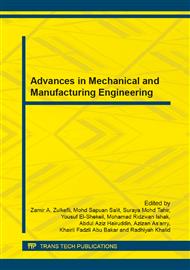p.189
p.197
p.204
p.210
p.216
p.222
p.228
p.234
p.240
Effect of Nozzle Angleson Spray Losses Reduction
Abstract:
Spray losses are the most important problem that is faced in the spray application process as result of spray drift to non target areas by the action of air flow.This paper investigated the spray drift for banding applicationusing even flat-fan nozzle TPEunder wind tunnel conditions.In addition, this paper also examined the effect of different spray fan angles 65°, 80° and 95° on spray drift particularly where there is need to make the nozzle operate at the optimum heights above the ground or plant level.In addition, three cross wind speeds 1, 2 and 3m/swere produced to determine the effect of wind speed on total spray drift.According to the results from this study, the nozzle anglehas a significant effect on the total spray drift. The nozzle angle 65° gave the highest drift reduction compared to the other nozzle angles. The maximum driftfor all nozzles was found at nozzle height of 60 cm. The minimum mean value of the drift was found at wind speed of 1 m/s. This study supports the use of nozzle angles of less than 95° on heights more than 0.5m and on wind speeds more than 1m/s as a means for minimizing spray drift.
Info:
Periodical:
Pages:
216-221
Citation:
Online since:
June 2014
Authors:
Keywords:
Price:
Сopyright:
© 2014 Trans Tech Publications Ltd. All Rights Reserved
Share:
Citation:


